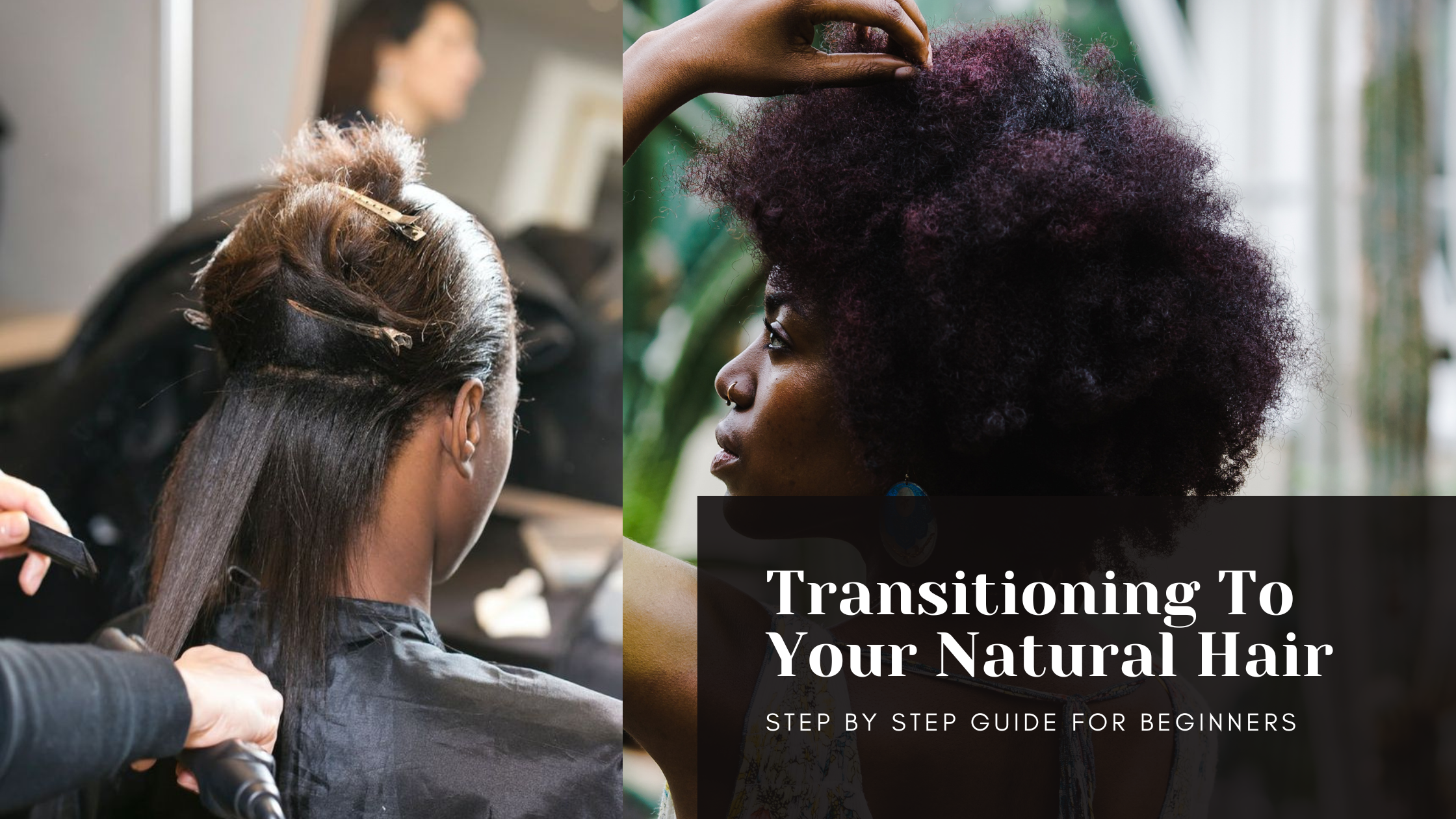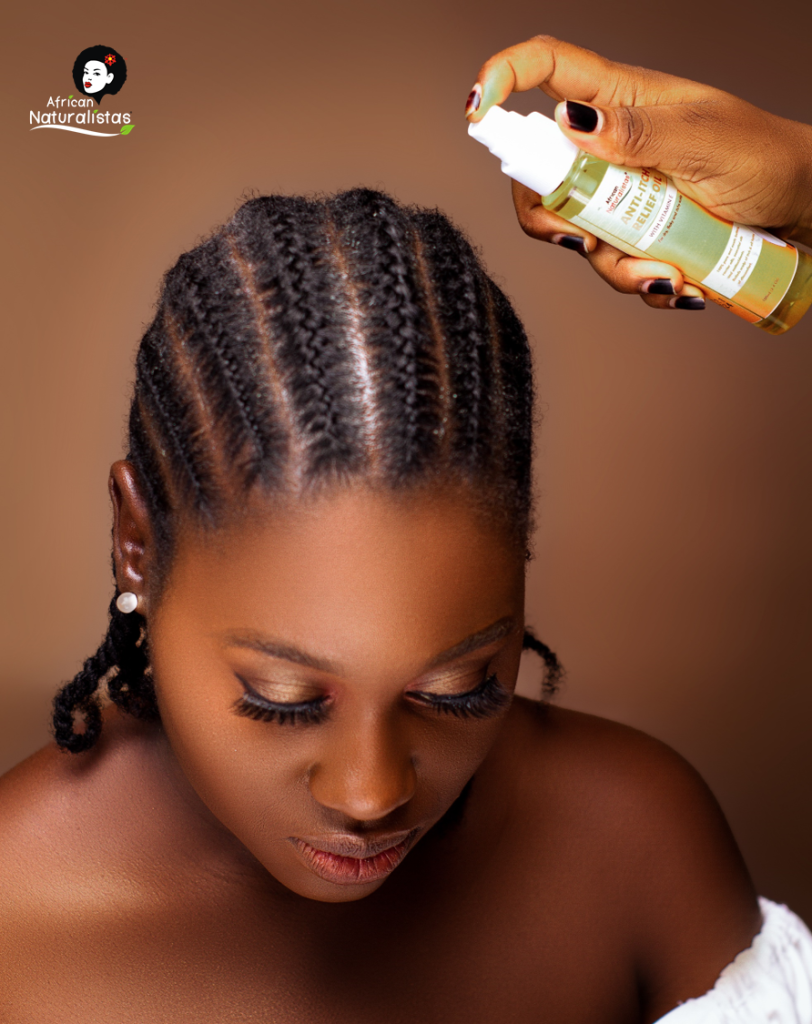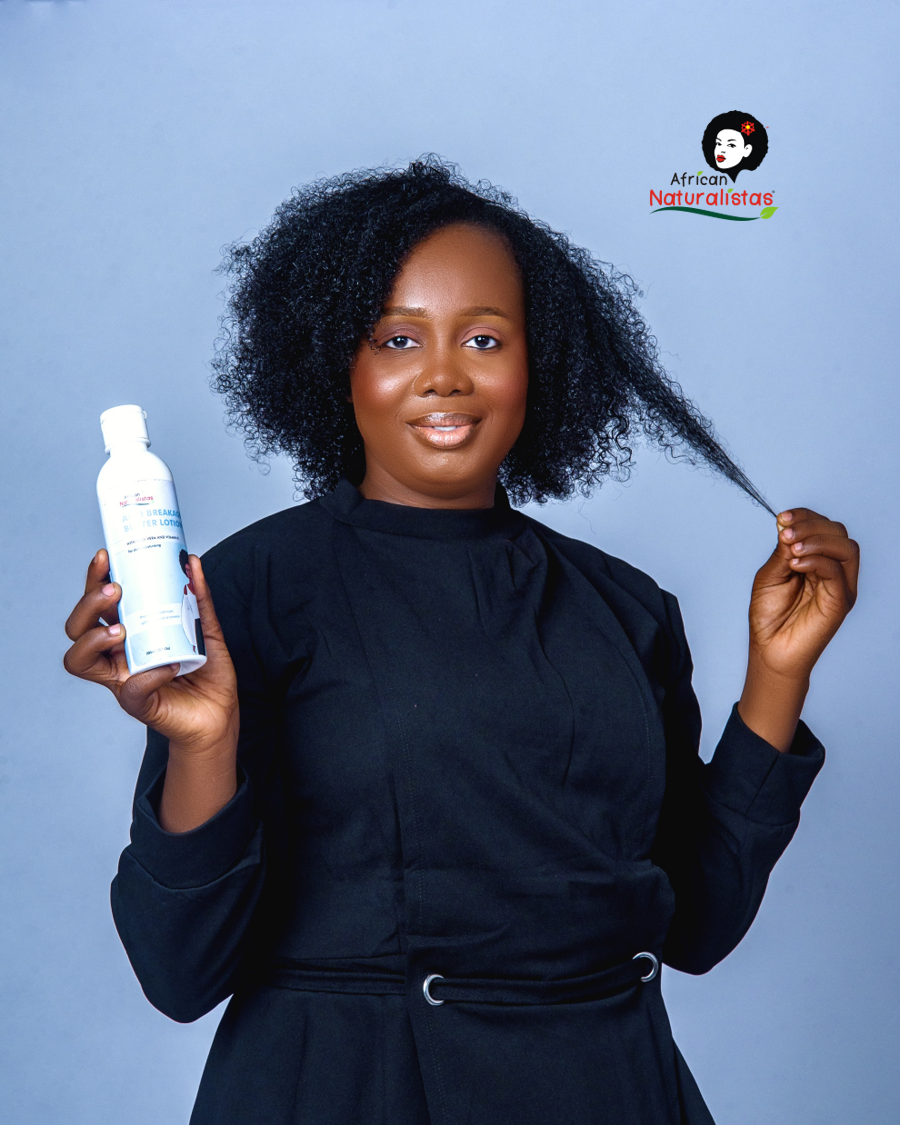If you've been follwoing the trend on the internet, you would have observed that the natural hair movement has been gaining more momentum, with more women embracing their natural curls, coils, and kinks.
According to Mintel, a market intelligence agency, 45% of black women believe natural styles are trendy, and 48% believe they exude confidence.
However if you are like most women out there, you are overwhelmed and unsure how to go about it, what products, will you need and the exact steps to follow to transition back to your natural hair.
In this post you will go thriugh a step-by-step gudie designed to help you transition smoothly to your natural hair, providing you with a comprehensive, step-by-step approach and product recommendations that will help you get the best result.
Note: All products can be found on our online store
Step 1 - Understanding Your Hair Type
Before diving into the world of natural hair care, it's crucial to understand your hair type. Hair types range from 2A (wavy) to 4C (coily) and knowing your type can significantly impact your new hair care routine.
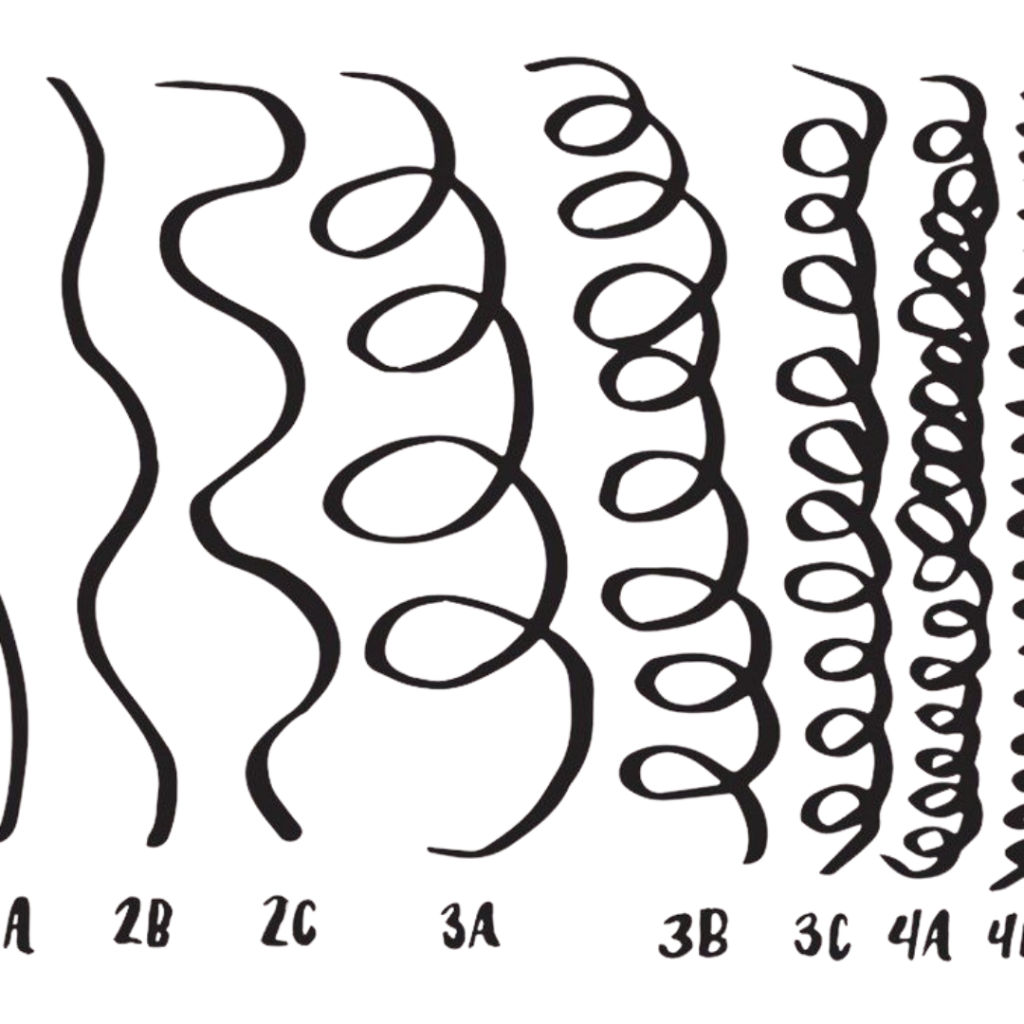
Another reason is that understanding your hair type helps you select the right hair care products and techniques for your hair.
For instance, people with high porosity hair that absorbs moisture quickly will do well with heavy hair creams while people with Type 2 (Wavy) hair that usually tends to be frizzy, and often lacks volume. are advised to avoid heavy creams
Notwithstanding, you can still use a gentle shampoo and conditioner suitable for various hair types. The African Naturalistas Moisturising Natural Shampoo and Deep Conditioning Mayonnaise is an excellent choice for maintaining moisture and promoting healthy hair growth.
Step 2- The Transition Phase
Transitioning in hair care refers to the process of growing out your natural hair while gradually trimming off the chemically treated ends. The aim here is to retain length and reduce damage.
Transitioning takes time and patience. Of course, your hair won't change overnight, but with consistent care, you'll see progress.
The transition phase can be broken down into 4 easy steps
- Stop Chemical Treatments: This is the first step. Here, you want to cease using relaxers, texturizers, or any other chemical treatments.
- Trim Regularly: You will schedule regular trims usually every 6-8 weeks to gradually remove relaxed or chemically treated ends. You can do this on your own or visit a professional hair stylist for help.
- Develop a Routine: Establish a consistent hair care routine that includes washing, deep conditioning, moisturizing, and protecting your hair.
- Protective Styling: Use protective styles like braids, twists, buns, or wigs to minimize manipulation and protect your hair from damage.
During the transition phase, it is important to keep your hair nourished with a leave-in conditioner. You can also use the African Naturalistas Daily Hair Mist to keep your hair and scalp hydrated and manage your hair during the transition phase.
Step 3- Dealing with Common Challenges
Just like any journey in life, transitioning from a chemical-treated hair to your natural hair often comes with its challenges. A common challenge with most ladies starting their natural hair care journey is shrinkage.
Shrinkage is a natural characteristic of curly and coily hair. It occurs when water leaves the strands.
Using products that help your locks retain moisture can prevent your curl pattern from shrinking, especially if your hair is particularly prone to dryness.
Other stretching techniques like banding or twist-outs can help you reduce shrinkage and elongate your curls.
Another common challenge is breakage. Hair breakage can happen for a variety of reasons, including specific hair products, diet, stress, and medical conditions.
Home remedies can help repair hair breakage in some instances. Common hair care practices for dealing with hair breakage are: handling your hair gently, avoiding excessive heat, and moisturising your hair.
You can strengthen your hair with the African Naturalistas Protein Treatment, which helps to rebuild and fortify your hair strands and thereby reduce the occurrence of shrinkage.
You can also use the anti-breakage butter lotion that makes your delicate hair strands stronger and less fragile.
Step 4 - Styling and Long-Term Maintenance
Having a long-term maintenance plan is key to healthy, manageable natural hair. This involves building a healthy hair care regimen that caters specifically to your hair type and needs.
One way to achieve this is to incorporate regular deep conditioning treatments to ensure your hair stays moisturized and resilient.
You should also use protective styles such as braids, twists, or buns to minimize manipulation and reduce the risk of breakage. If you have to, you can trim your ends regularly to prevent split ends and maintain the overall health of your hair.
Watch this video that talks about split ends and how to get rid of it>>
It's also important to protect your hair at night by using a satin or silk bonnet, scarf, or pillowcase to reduce friction and retain moisture.
Avoid excessive heat styling and chemical treatments, which can weaken your hair and cause damage over time. A better option is to embrace low-manipulation styles and natural hair techniques that enhance your hair's natural texture.
Consistency is crucial in maintaining healthy natural hair. So stick to your routine, listen to your hair's needs, and adjust your regimen as necessary. Also incorporate healthy lifestyle habits, such as a balanced diet and adequate hydration, to support hair health from the inside out.
By following these steps, you'll be able to enjoy strong, vibrant, and beautiful natural hair for the long term.
If you would like to get your desired outcome for your hair then this Intensive Hair Care Regimen should come in handy.
The Intensive Hair Care Regimen is robust and comprehensively details the calendar, steps, tasks objectives, estimated time required, products required, etc.
Check the hair regimen and natural hair growth pack here.
How Long Does It take to Regrow The Natural Hair ?
The time it takes to regrow your natural hair when transitioning from relaxed hair is not fixed and it varies widely depending on factors like your hair growth rate, hair care routine, and overall health.
As for tranisitioning, it depends on the method of transitioning you decide to adopt.
- Big Chop: If you decide to cut off all your relaxed hair at once (known as the “big chop”), you’ll immediately start growing out your natural hair from scratch. This can be a quicker way to see your natural texture but may require a significant change in appearance. It's usually a hard choice for many people.
- Gradual Transition: If you choose to gradually trim off the relaxed ends over time, the transition period will be longer, longer than you amy expect actually, but you can maintain more length during the process.
Typical Timeline
- Short-Term Transition (Big Chop): After the big chop, you’ll start seeing your natural hair grow out immediately. Within 6 months to a year, you could have around 3-6 inches of new growth, depending on your hair growth rate.
- Long-Term Transition (Gradual Trim): For those who prefer a gradual transition, the process can take anywhere from 1 to 2 years or more to fully grow out the natural hair, depending on how often you trim the relaxed ends and how fast your hair grows.
Example of What the Long-Term Transition Timeline May Look Like
- First 6 Months: You’ll likely see around 3 inches of new growth. Your hair care routine will focus on maintaining moisture and preventing breakage at the line of demarcation. (scroll up to see suggested products above)
- 6 Months to 1 Year: By the end of the first year, you could have around 6 inches of natural hair growth. Regular trims will help manage the remaining relaxed ends.
- 1 to 2 Years: Over the next year, you’ll continue to see growth, potentially reaching 12 inches of new growth if your hair grows at the average rate. By this time, you may have trimmed off most or all of the relaxed ends.
Conclusion
Growing a healthy natural hair takes time and patience. To stay motivated, celebrate small wins like less breakage or a new hair growth spurt!
Remember, your natural hair journey is a journey of self-love and awareness. So surround yourself with positivity and be patient with your progress.
You can join online forums, social media groups, and local meet-ups to connect with others on their natural hair journey. Sharing experiences and tips can be incredibly motivating and reading success stories from women who have successfully transitioned to their natural hair as their journeys can provide valuable insights and inspiration.
If you are looking for versatile styling and hair care products, don’t forget to check the African Naturalistas store.
See you next week.
